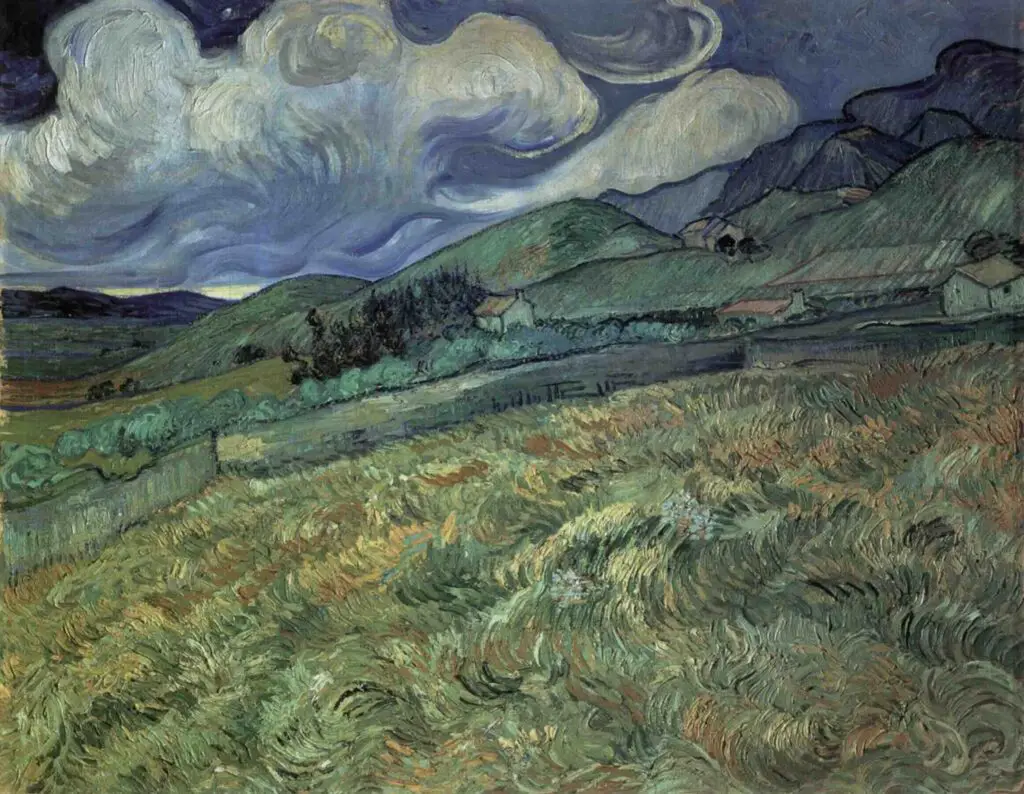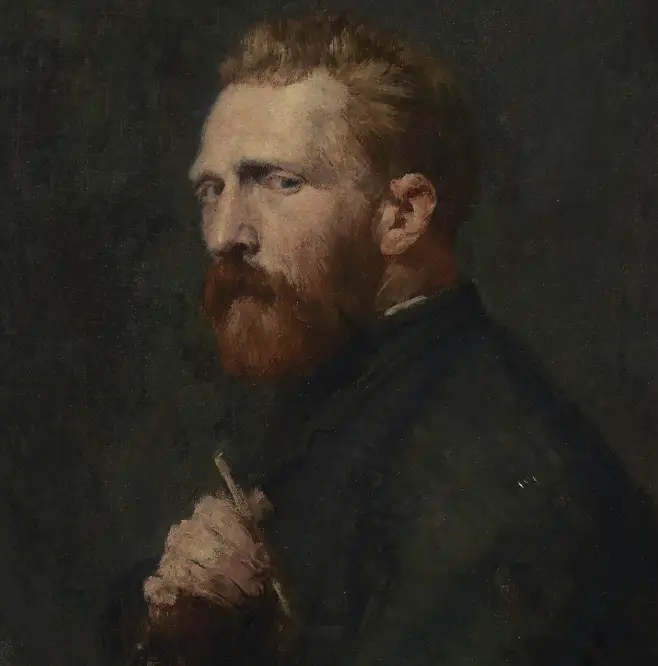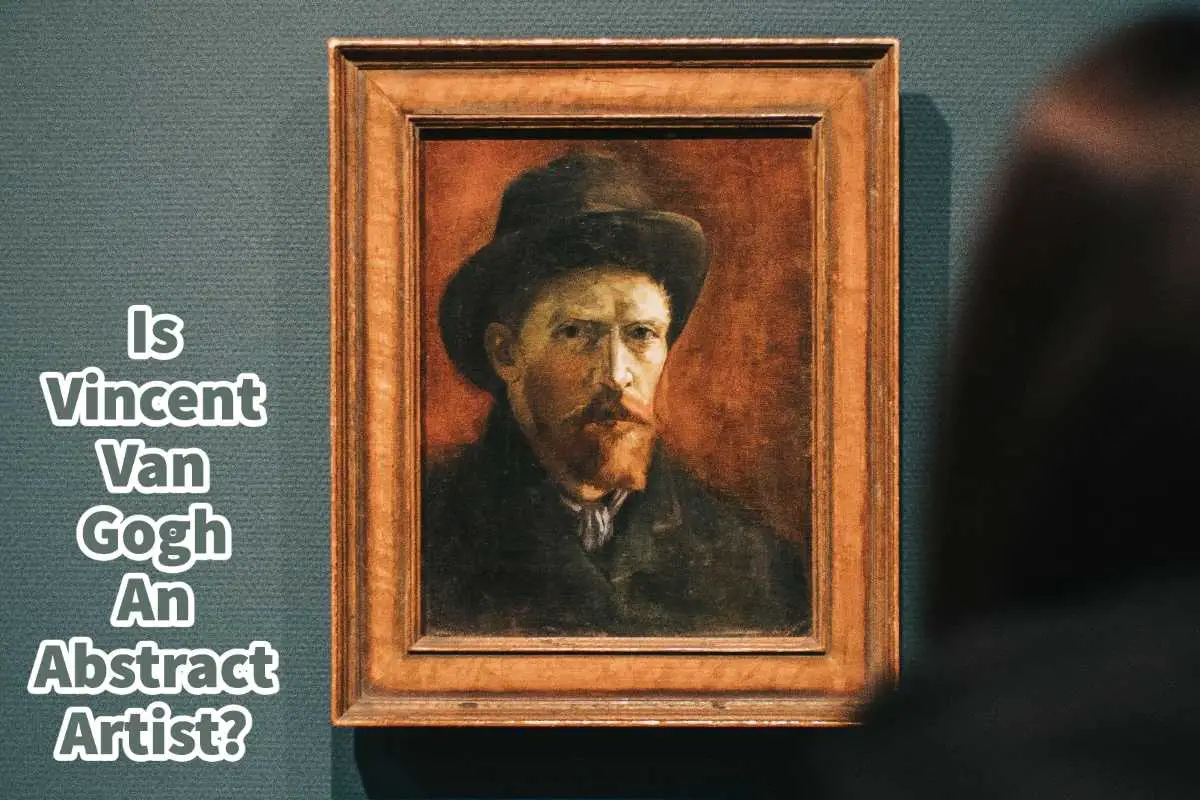Many people wonder what art movement Vincent Van Gogh was part of. They want to know if Vincent Van Gogh was considered an Abstract artist.
Vincent Van Gogh was not considered an Abstract Artist but regarded as a Post-Impressionism artist. He is known to have admired the Impressionist artist, but he never saw himself as part of the group of Impressionists. Van Gogh had a unique style and choice of colors for his paintings.
Table of Contents
- Vincent Van Gogh Was Not An Abstract Artist
- Vincent Van Gogh Was An Post – Impressionist Artist
- Van Gogh And The Impressionism Movement
- Frequently Asked Questions
- Related Questions
Vincent Van Gogh Was Not An Abstract Artist
Vincent Van Gogh is not considered an abstract artist. The Abstract Art movement started in the early 1900s; Vincent Van Gogh’s untimely death was 1890.
The Tate defines Abstract art as:
“Abstract art is art that does not attempt to represent an accurate depiction of a visual reality but instead use shapes, colours, forms and gestural marks to achieve its effect.”
Tate
Abstract Art Includes These Elements
Abstract art is about the separation of something from something else. Here are a few things that Abstract Art will usually include:
Geometric Shapes
Abstract art uses geometric shapes or gestural marks with no external visual reality. In other words, the art can use shapes and marks that do not look real or have a meaning. An example of the work of an abstract artist would be Wassily Kandinsky’s art.
Used Colors, Lines, Tones, And Textures
Abstract artists would also use elements of form such as colors, lines, tones, and textures for their artwork.
Moral Dimension
Some abstract art will include a moral dimension in the art—things like order, purity, simplicity, and spirituality. An example of this would be the art by the Swedish artist Hilma af Klint, which had a lot of spiritual elements in her art.
Part Of Modern Art
Abstract art was formed in the 1900s as part of the modern art movement.
Abstract art is a very different art form than the type of art that Vincent Van Gogh created. Vincent Van Gogh’s art was built upon the Impressionism movement, considered Post-Impressionist.

Vincent Van Gogh Was An Post – Impressionist Artist
Post-Impressionism was a movement that started in France; it was an extension of the Impressionism movement. The Post-Impressionists rejected all the restrictions placed on Impressionism art.

Post-Impressionism art was a highly personal style; we can see this in Vincent Van Gogh’s artwork. He did not try to copy or imitate what the Impressionists were doing but had his unique look, colors, and style.
Post-Impressionism built upon the admiration of the Impressionism movement but also showed changes within the movement and style of art. Tate defined Post-impressionism as:
“Post-impressionism is a term which describes the changes in impressionism from about 1886, the date of last Impressionist group show in Paris.”
Tate
The Post-Impressionists accepted Impressionism; in fact, many admired the Impressionists. The Post-Impressionists changed their art as it was not purely Impressionist art.
The four foremost Post-Impressionism artists are Paul Cezzane, Paul Gauguin, George Seurat, and Vincent Van Gogh. All four are considered to be significant leaders in the Post-Impressionism movement.
Vincent Van Gogh would paint from nature as the Impressionists did, but he also developed a highly personal use of his colors and brushwork. His work was often highly subjective and responded to his emotional and inner feelings.
Van Gogh And The Impressionism Movement
We know that Van Gogh admired Impressionism artists. In letters to his brother Theo and others, he made several favorable comments about Claude Monet and other Impressionist artists but never said he was part of the group.
In a letter to Emile Bernard, his friend, and fellow Post-Impressionism artist and writer, Vincent Van Gogh wrote this on 26 November 1889:
“I’m not saying that one may not take the risk after a whole manly life of searching, of fighting hand-to-hand with reality, but as far as I’m concerned I don’t want to rack my brains over that sort of thing. And the whole year, have fiddled around from life, hardly thinking of Impressionism or of this or that.
Vincent Van Gogh’s Letter To Emile Bernard, 26 November 1889
However, once again I’m allowing myself to do stars too big, &c., new setback, and I’ve enough of that.
So at present am working in the olive trees, seeking the different effects of a grey sky against yellow earth, with dark green note of the foliage; another time the earth and foliage all purplish against yellow sky, then red ochre earth and pink and green sky. See, that interests me more than the so-called abstractions.”
We learn that Van Gogh knew of the Impressionists but did not consider himself fully part of the movement. Van Gogh would continue to paint how he wanted and saw fit, not how the Impressionists or others thought he should paint.
He painted nature not as it was but as he saw it, such as making stars bigger than they are or changing the colors he saw in nature.
Vincent Van Gogh was not an Abstract artist nor an Impressionist artist. Instead, Van Gogh is considered one of the leading figures of the Post-Impressionism movement.
Anita Louise Art is dedicated to art education, great artists, and inspiring others to find and create their art. We love art that uplifts and inspires. #ArtToMakeYouSmile! #ArtToMakeYouHappy!
If you are interested to see any of my art, you can find out more by clicking here. If you are interested in what inspires me and my paintings, you can discover more by clicking here.
We have a free newsletter and would love you to be part of our community; you can subscribe to the newsletter by clicking here. If you have any questions, I would be happy to talk to you. You can reach me, Anita, by clicking here.
Subscribe to our Anita Louise Art YouTube Channel with great videos and information by clicking here.
Join us for our podcast “5 Minutes With Art.” Spend just 5 minutes a week with us to discover and learn about great art and artists. You can find out more about our podcast by clicking here.
Frequently Asked Questions
Was Vincent Van Gogh an Abstract Artist?
No, Vincent Van Gogh was not considered an Abstract Artist. He was primarily associated with the Post-Impressionist art movement.
What art movement was Vincent Van Gogh part of?
Vincent Van Gogh was part of the Post-Impressionist art movement.
Did Van Gogh have any influence from the Impressionist artists?
Yes, Van Gogh admired Impressionist artists, but he did not consider himself part of the group of Impressionists.
How would you describe Van Gogh’s artistic style?
Van Gogh’s artistic style was characterized by bold and vibrant colors, expressive brushwork, and a focus on depicting emotional and psychological depth.
What are some key features of Van Gogh’s paintings that distinguish them from abstract art?
Van Gogh’s paintings are known for their recognizable subjects, such as landscapes, portraits, and still lifes, distinguishing them from abstract art’s non-representational nature.
Did Van Gogh use recognizable objects and scenes in his art?
Yes, Van Gogh’s art often featured identifiable objects, landscapes, and people, which is a hallmark of figurative art.
How did Van Gogh’s use of color differ from abstract artists?
Van Gogh’s use of color was bold and expressive, but it was still used to depict recognizable subjects and scenes, unlike abstract art, which often lacks identifiable subject matter.
Were there any abstract elements in Van Gogh’s work?
While Van Gogh’s work was not purely abstract, some of his later pieces, such as “Starry Night,” incorporated elements that could be interpreted as abstract in their distortion of reality.
Did Van Gogh’s style change over time?
Yes, Van Gogh’s style evolved throughout his career, with his later works often featuring more pronounced elements of expressionism and abstraction.
What is the significance of Vincent Van Gogh in the art world?
Vincent Van Gogh is celebrated for his unique artistic vision and contributions to the Post-Impressionist movement. His work has had a profound and lasting impact on the art world, influencing countless artists and art enthusiasts worldwide.
Related Questions
How Did Vincent Van Gogh’s Paintings Become Famous?
Vincent van Gogh’s painting became famous because his sister-in-law took it upon herself after his death and the death of her husband Theo to find a way to get his paintings and name out to the world. She was brilliant and savvy in how she did this. By the time she died in 1925, Vicent van Gogh was world renown.
By clicking here, you can learn more by reading How Did Vincent Van Gogh’s Paintings Become Famous?.
Why Is Van Gogh Considered Such a Great Artist?
Many things make Vincent Van Gogh unique and great as an artist. He had a great way to use color in his heart, but more than that, he was an artist who set and paved the way, and his brushstroke technique used color and his design ability. What is interesting about all this he did this as a self-taught artist.
By clicking here, you can discover more by reading Why Is Van Gogh Considered Such a Great Artist?
What Was The Impact Of Vincent Van Gogh On The Art World?
Van Gogh used color, form, and emotions in his art. He had a bright palette that was individualized for his time. Even though he did not see a lot of success during his life after he died, the impact of his art can be seen in both the Expressionism and Fauvism movements that were taking place in Europe.
By clicking here, you can learn more by reading What Was The Impact Of Vincent Van Gogh On The Art World?

